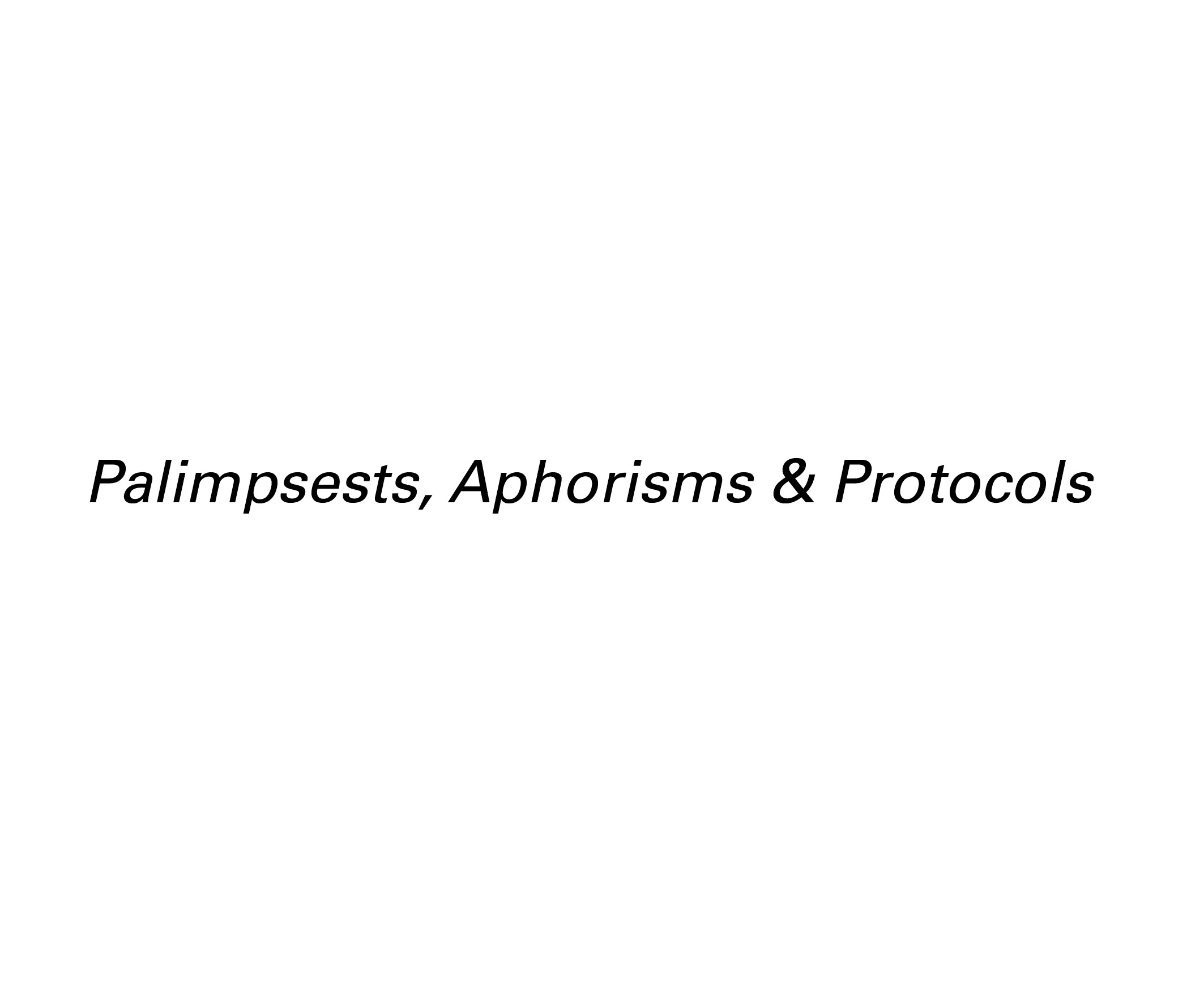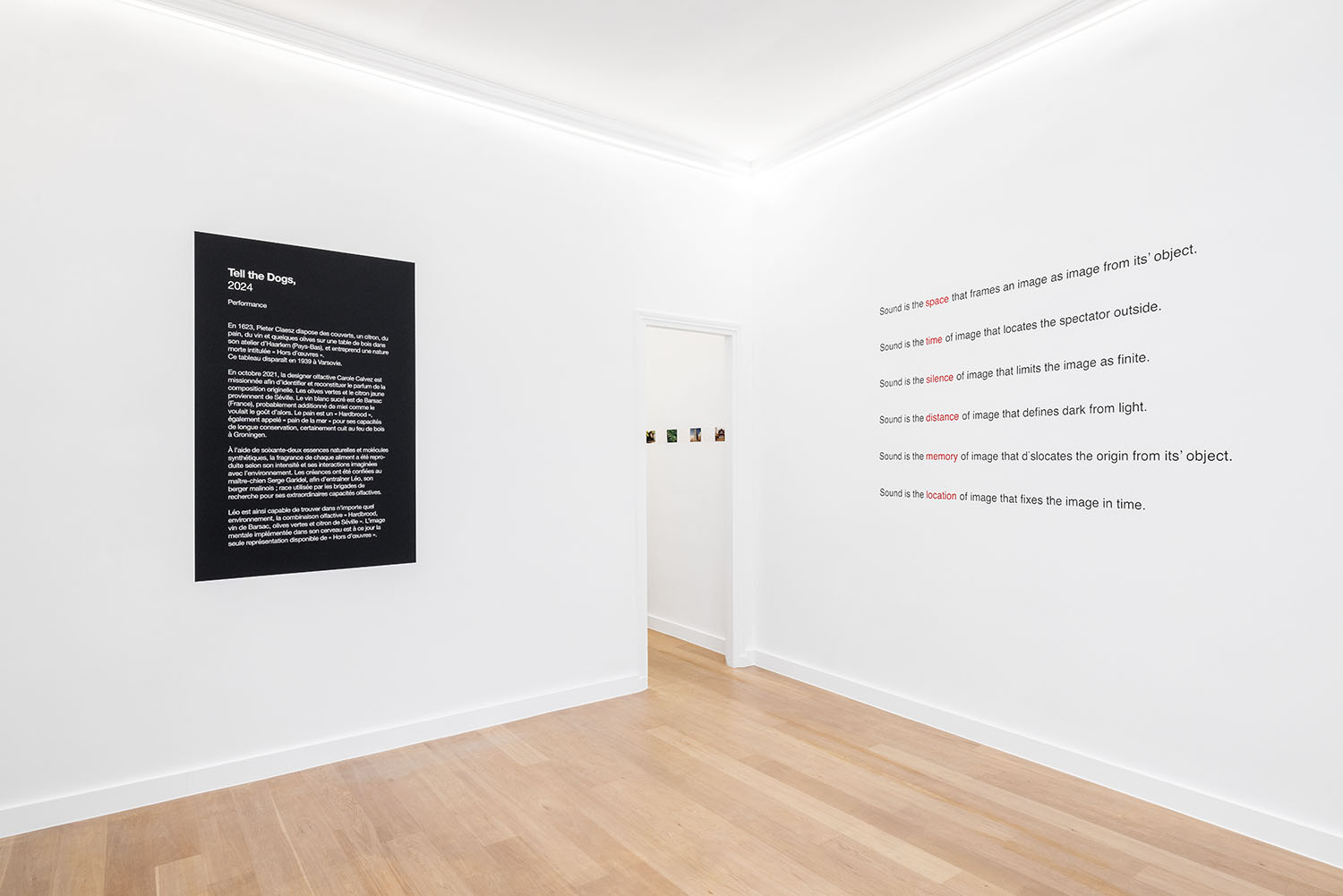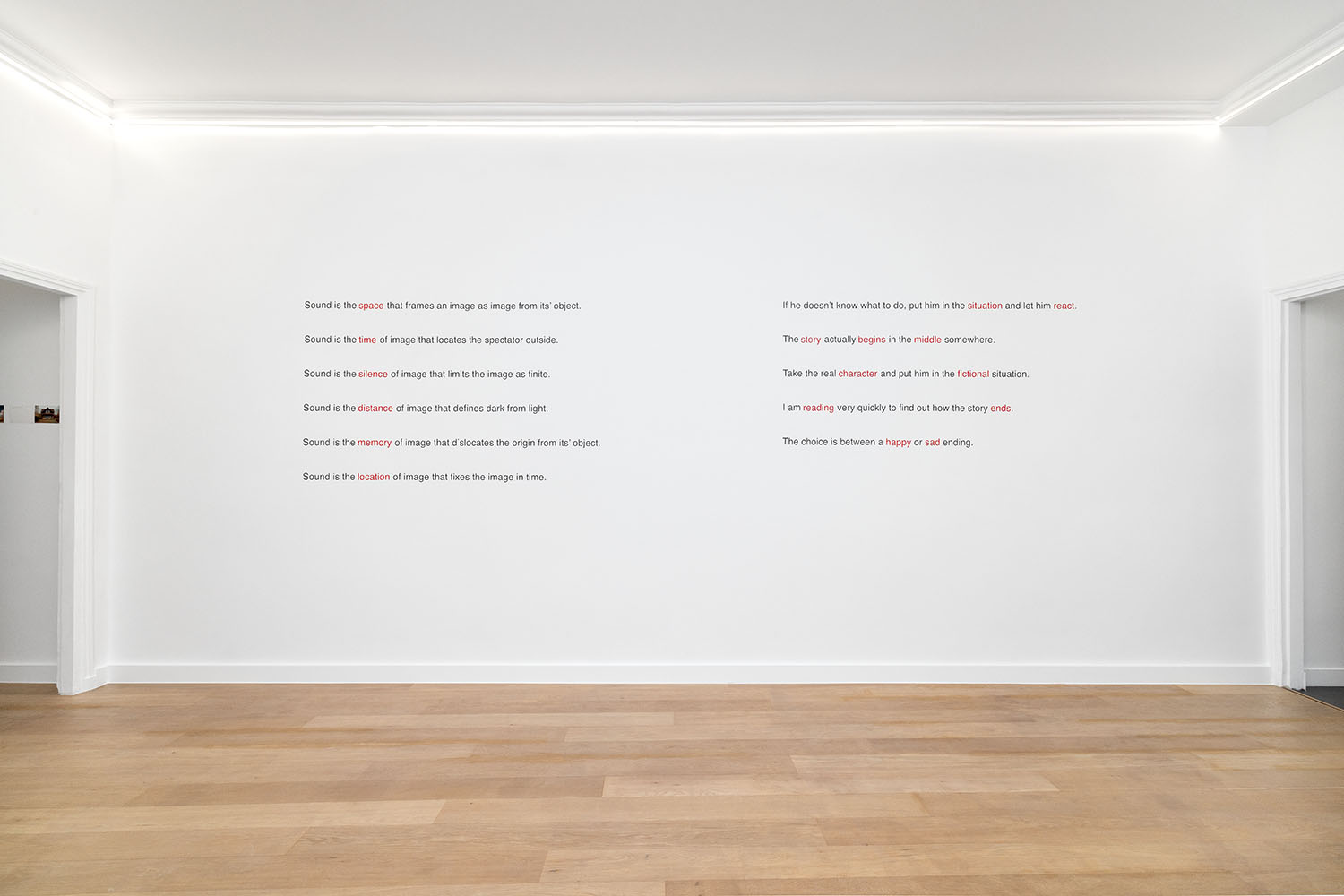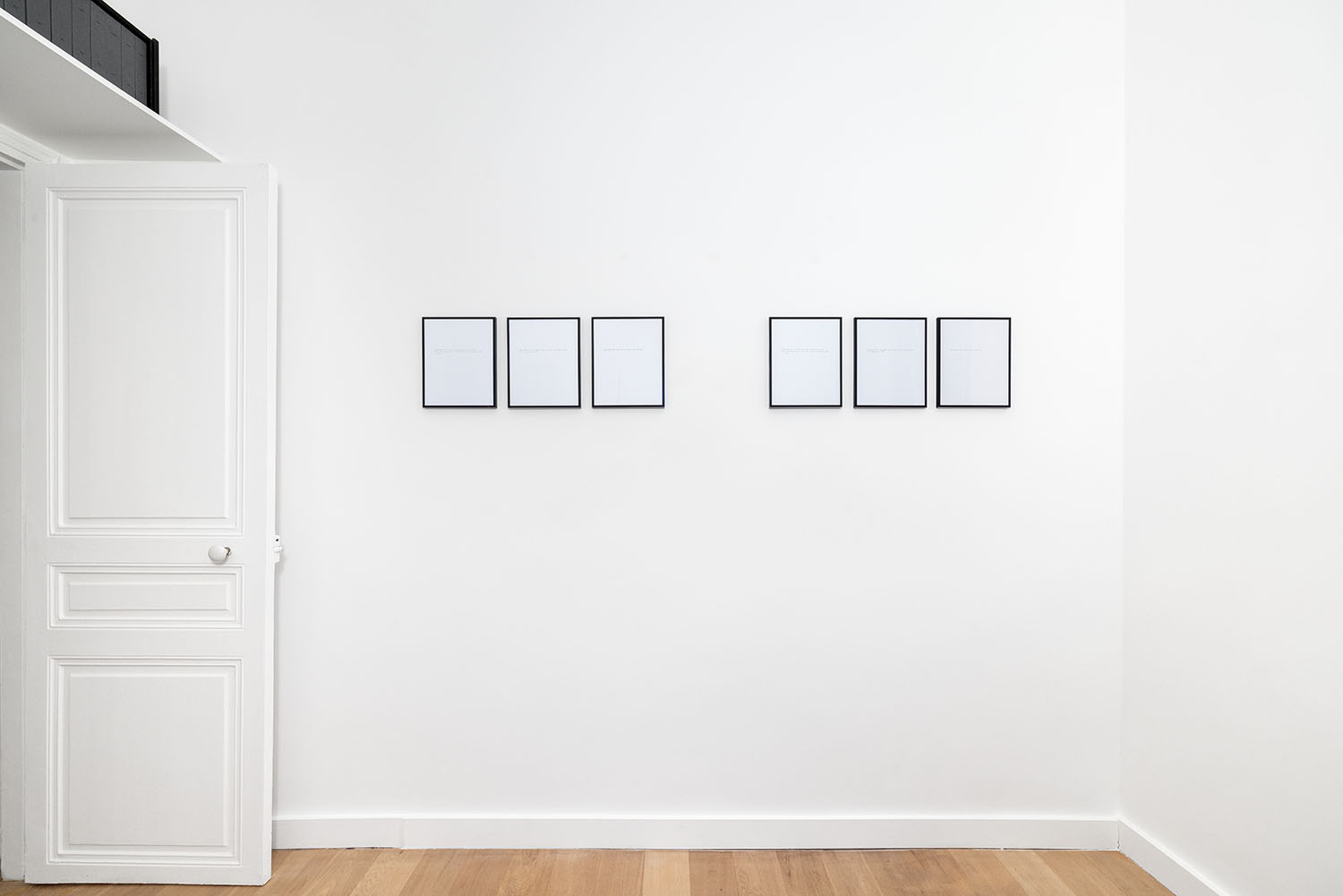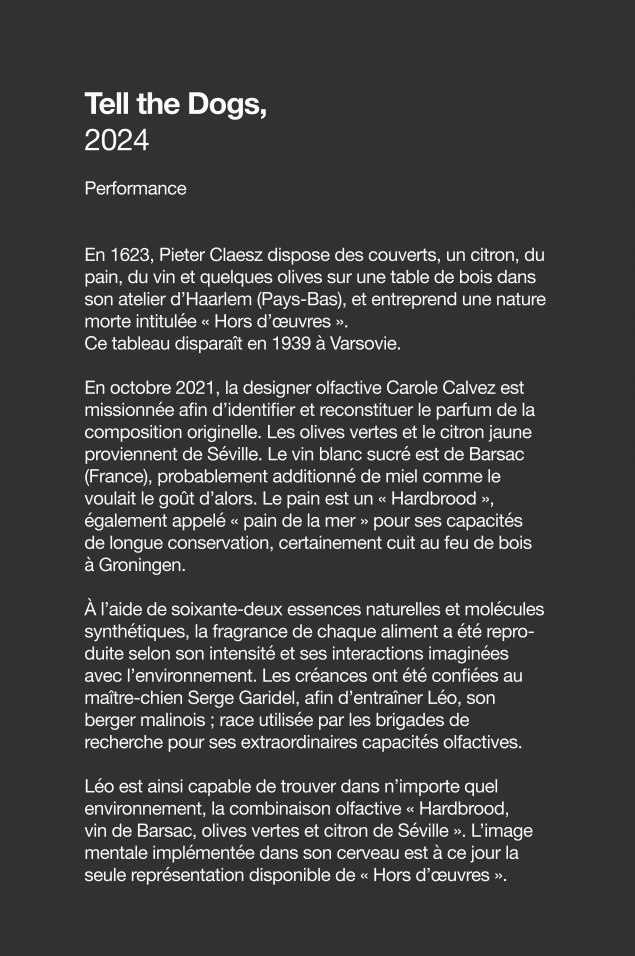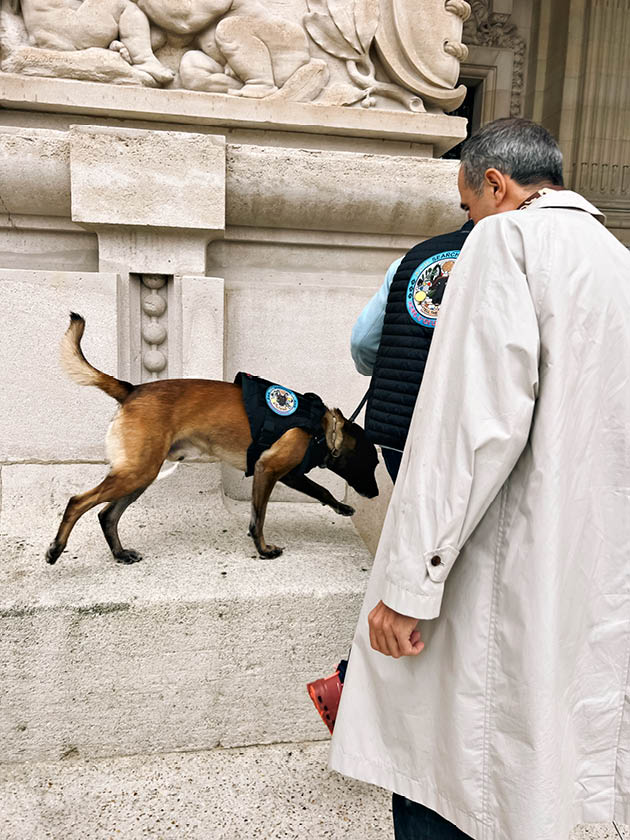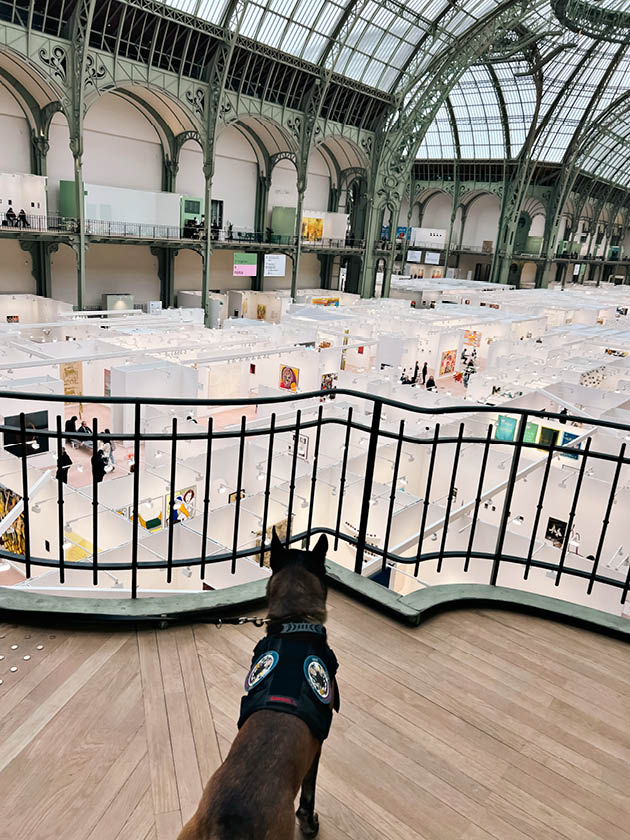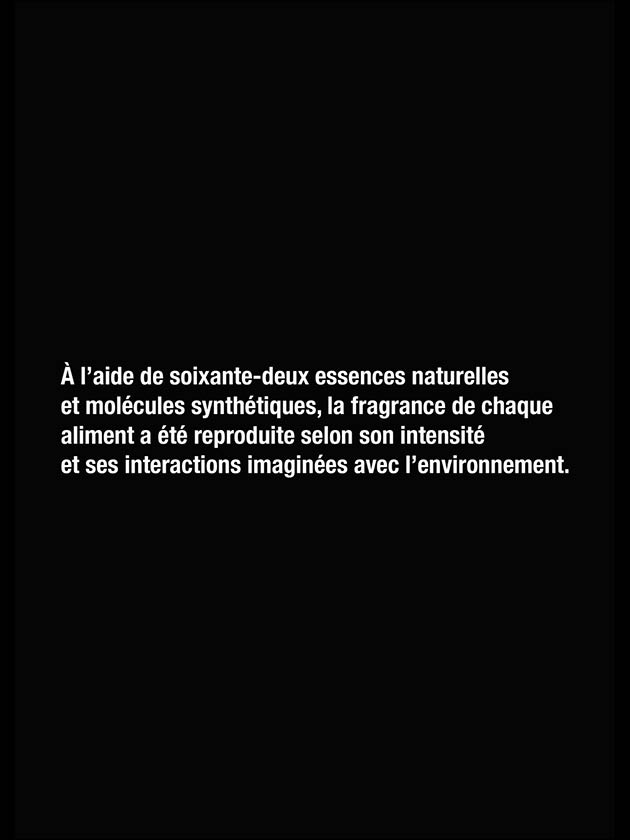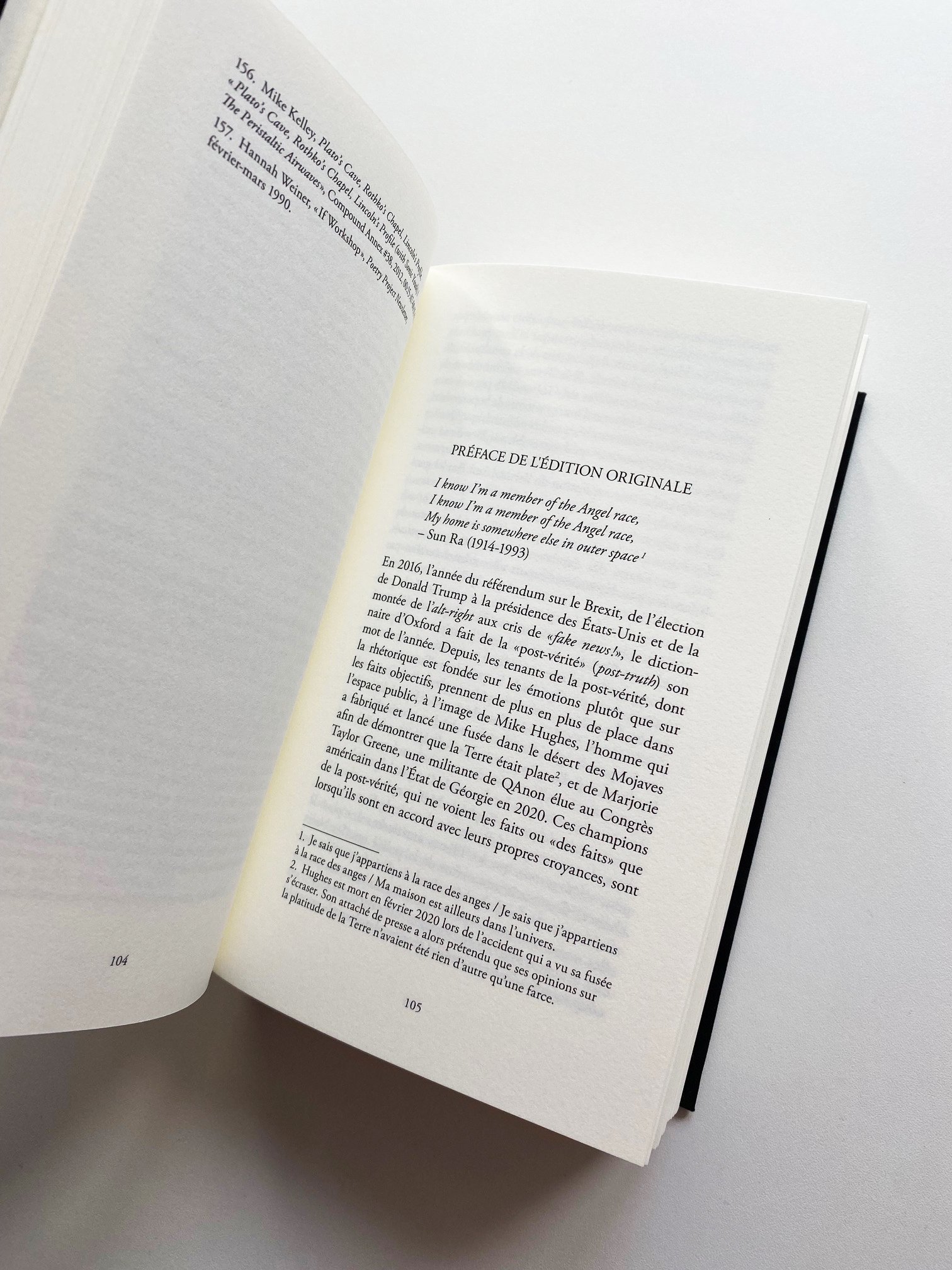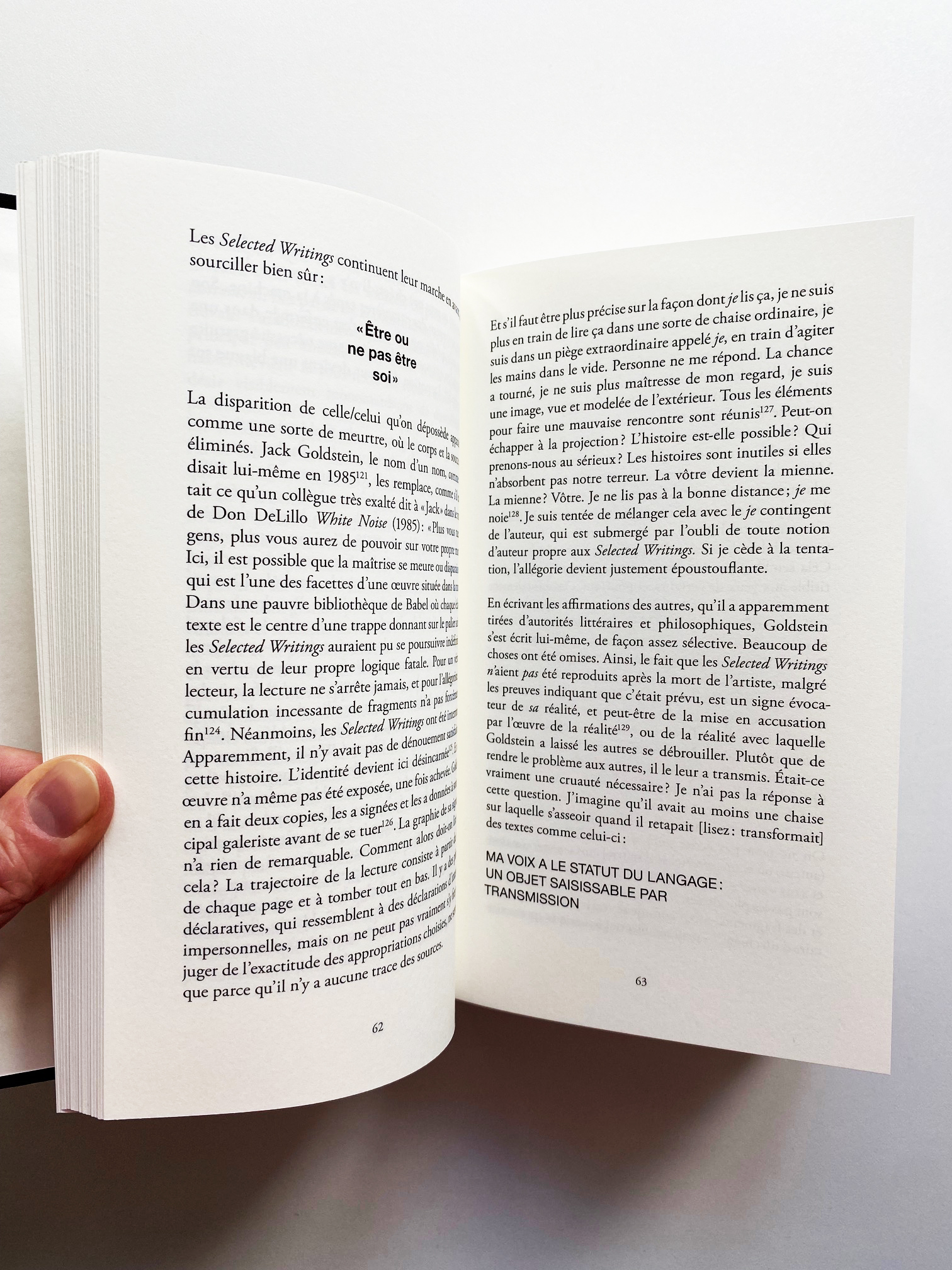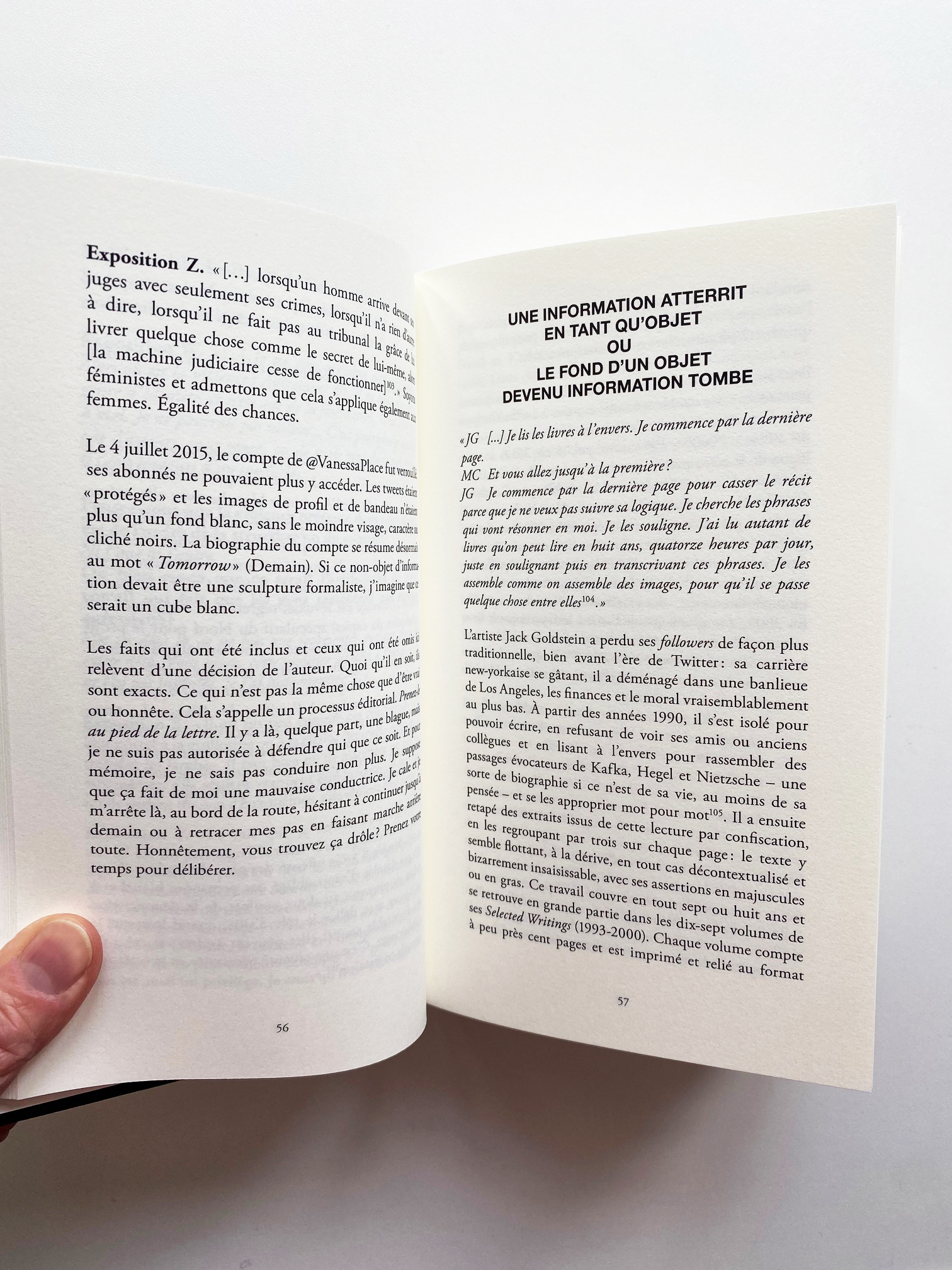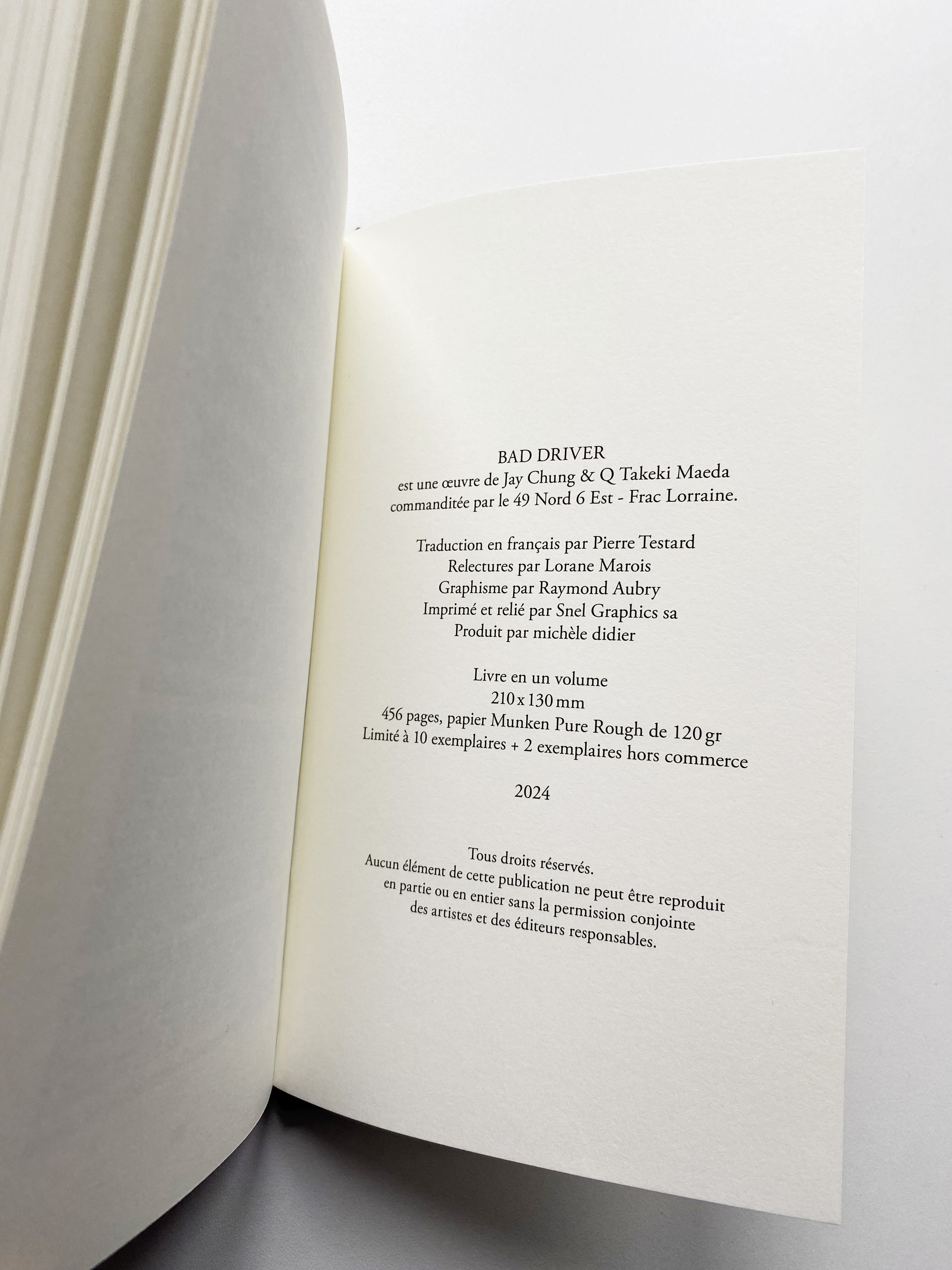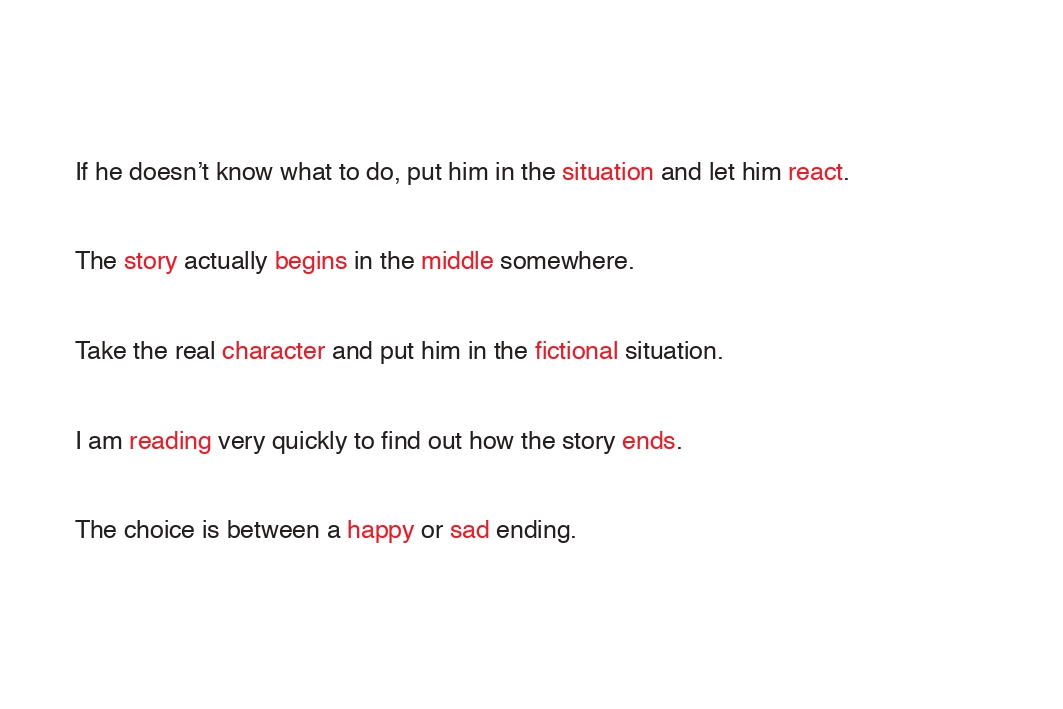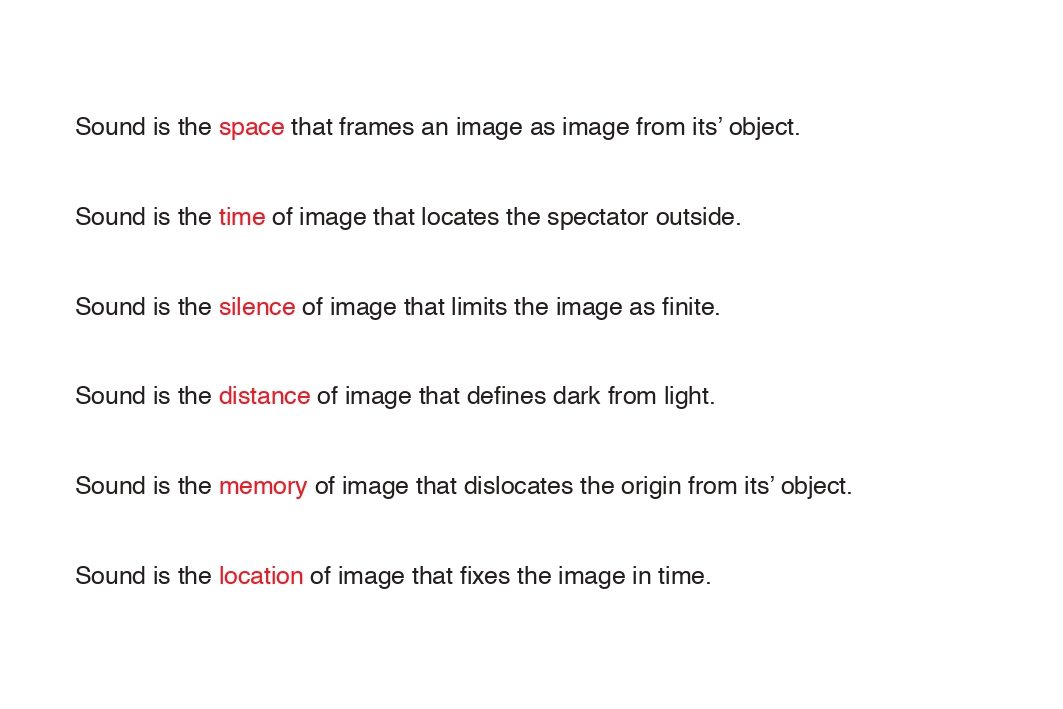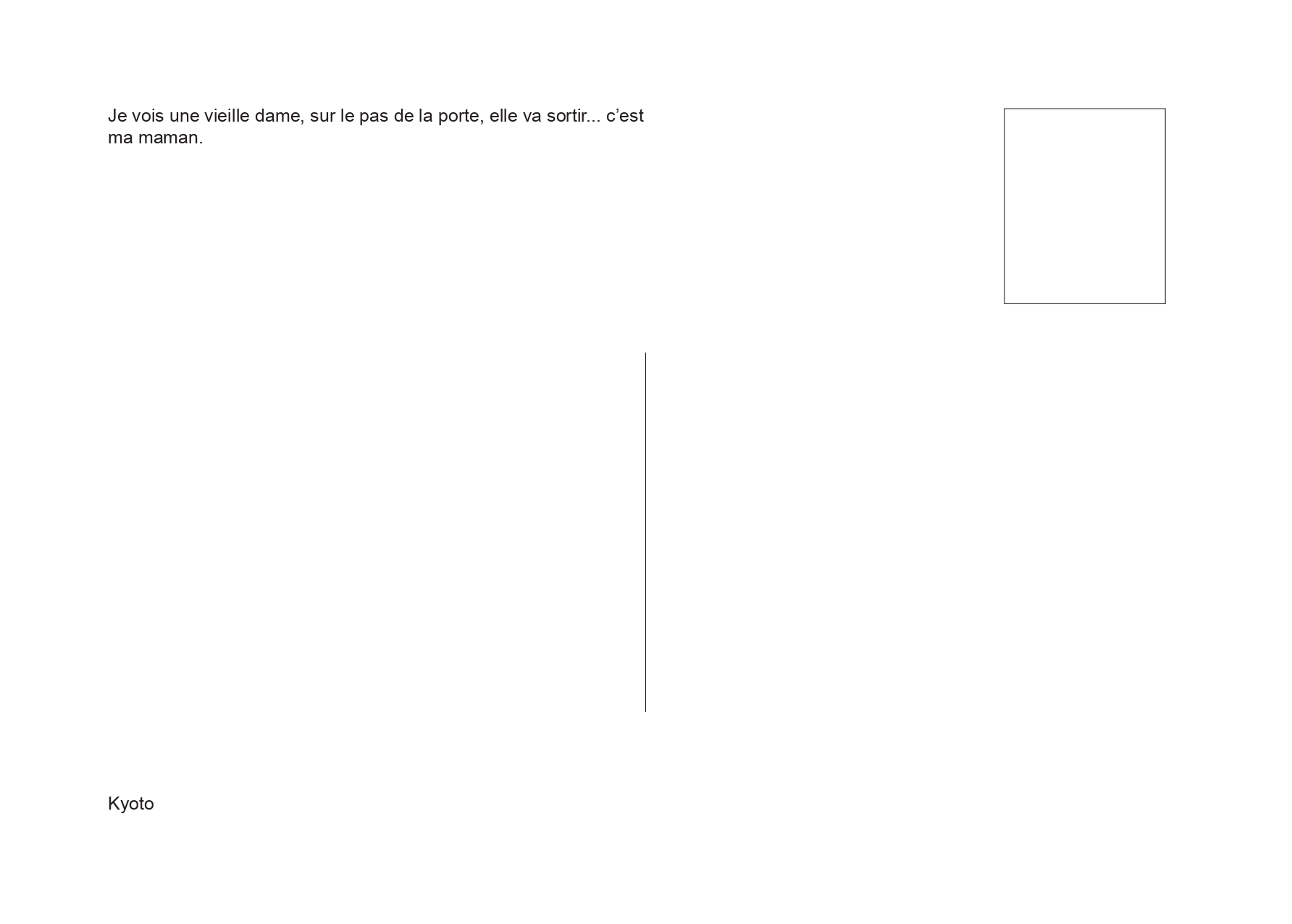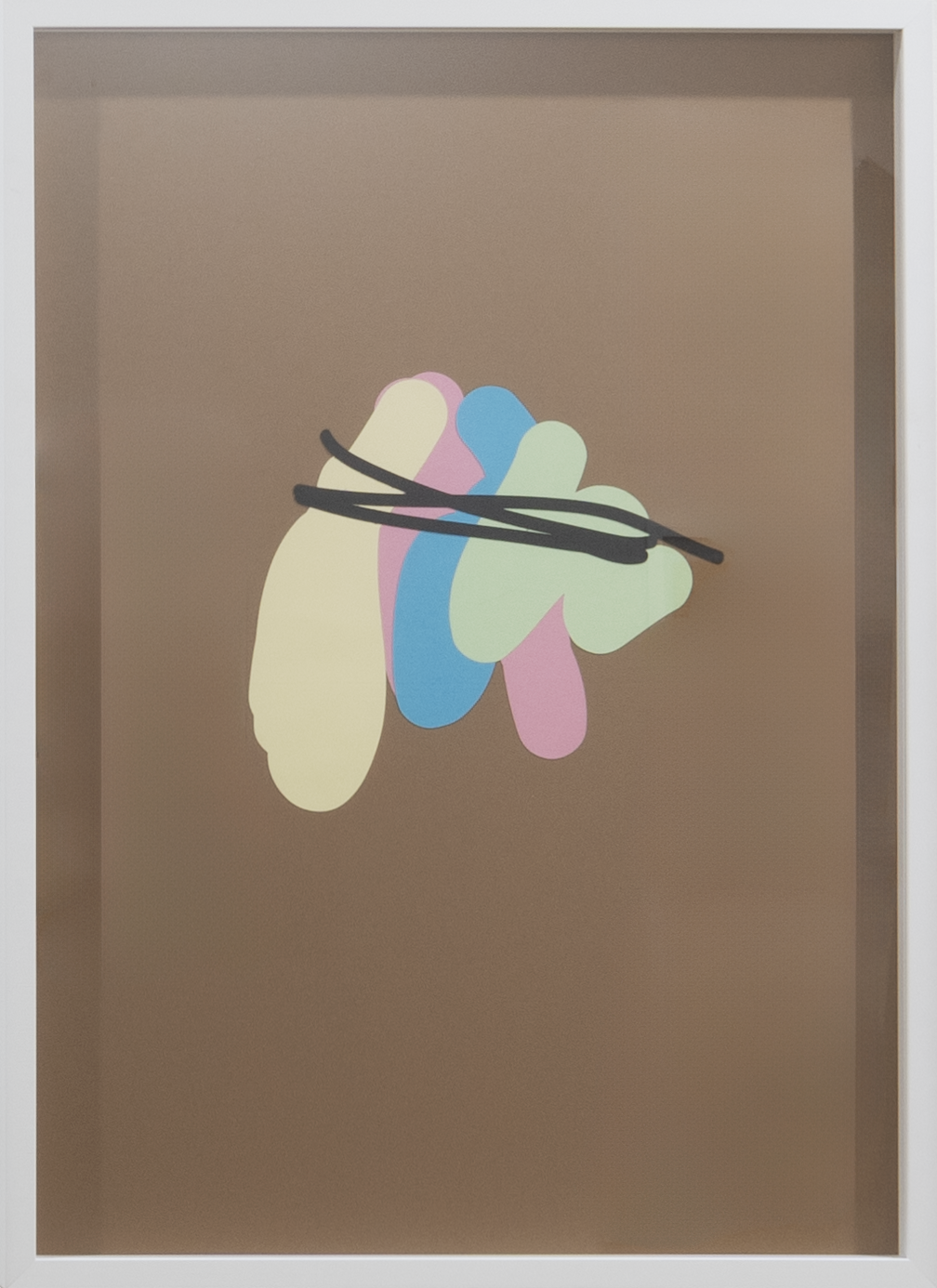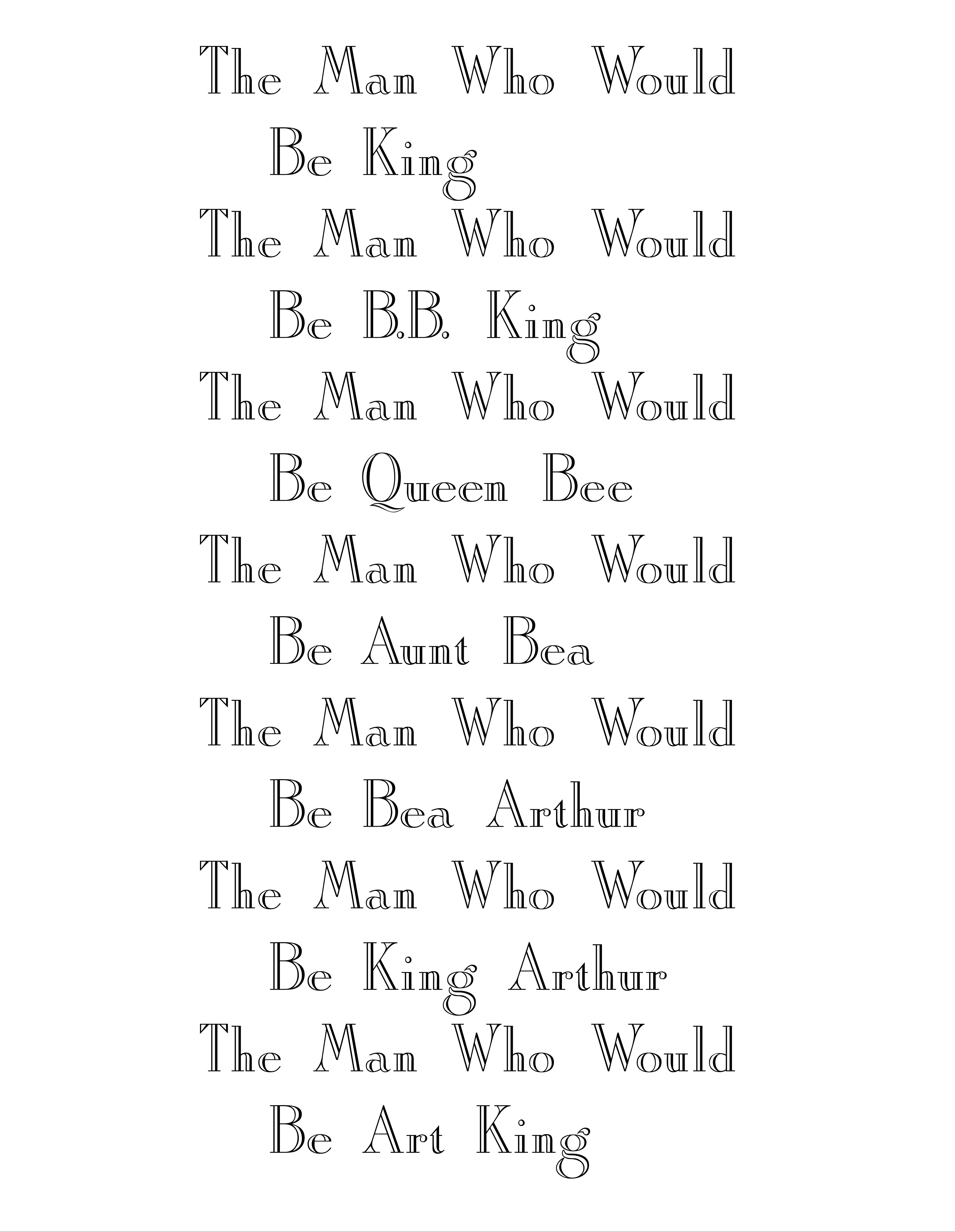Fiona Banner, Robert Barry, Brognon Rollin, Jay Chung and Q Takeki Maeda, Jack Goldstein, Cari Gonzalez-Casanova, IKHEA©SERVICES - GLITCH, Mathieu Mercier, Kay Rosen, Michaela Spiegel - Palimpsests, Aphorisms & Protocols - Exhibitionmfc-michèle didier | Paris - Brussels - PARIS
The terms 'palimpsests', 'aphorisms' and 'protocols' evoke rich and varied concepts, often used in literary, philosophical or artistic contexts.
1. Palimpsests: originally, a palimpsest refers to an ancient manuscript whose text has been erased to allow a new text to be written. It evokes the idea of layers of meaning and memory, where traces of the past persist beneath the surface. In art and literature, the concept of palimpsest is often used to describe works that incorporate historical elements or reveal layers of meaning.
2. Aphorisms: these are concise and often memorable statements that express a truth or a general principle. They are often used to convey profound thoughts succinctly. For while its formulation may seem definitive, it doesn't claim to say everything, or the whole of anything.
3. Protocols: this term can refer to a set of rules or conventions to be followed in a given context, whether scientific, artistic or social. In the arts, protocols can refer to specific methods that artists adopt in their practice, often to explore particular ideas or concepts. It is no longer the artist's hand that makes the work, but the protocol, since a third party can take its place.
These three concepts can interact in fascinating ways in works of art or writing that seek to explore the complexity of human thought and memory.
The terms 'palimpsests', 'aphorisms' and 'protocols' evoke rich and varied concepts, often used in literary, philosophical or artistic contexts.
1. Palimpsests: originally, a palimpsest refers to an ancient manuscript whose text has been erased to allow a new text to be written. It evokes the idea of layers of meaning and memory, where traces of the past persist beneath the surface. In art and literature, the concept of palimpsest is often used to describe works that incorporate historical elements or reveal layers of meaning.
2. Aphorisms: these are concise and often memorable statements that express a truth or a general principle. They are often used to convey profound thoughts succinctly. For while its formulation may seem definitive, it doesn't claim to say everything, or the whole of anything.
3. Protocols: this term can refer to a set of rules or conventions to be followed in a given context, whether scientific, artistic or social. In the arts, protocols can refer to specific methods that artists adopt in their practice, often to explore particular ideas or concepts. It is no longer the artist's hand that makes the work, but the protocol, since a third party can take its place.
These three concepts can interact in fascinating ways in works of art or writing that seek to explore the complexity of human thought and memory.
Exposed artworks
Digital print on paper
52.36 x 35.04 in ( 133,1 x 89,2 cm )
Set of three sheets of paper in its portfolio
11.02 x 8.27 in ( 28 x 21,5 x 0,6 cm )
NFT
9 colour panels + 9 black text panels
9.45 x 7.09 in ( 24 x 18 cm )
82.68 x 51.18 in ( 210 x 130 cm )
Letters painted on wall, red and black
Letters painted on wall, red and black
26 postcards in a slipcase
3.94 x 5.51 in ( 10,5 x 14,8 cm )
Protocol - A4 document
Collage
27.56 x 19.69 x 0.79 in ( 70 x 50 x 2 cm )
Print on Fuji Crystal Archive Paper, super glossy - Mounted on Dibond
39.76 x 39.76 in ( 101 x 101 cm )
